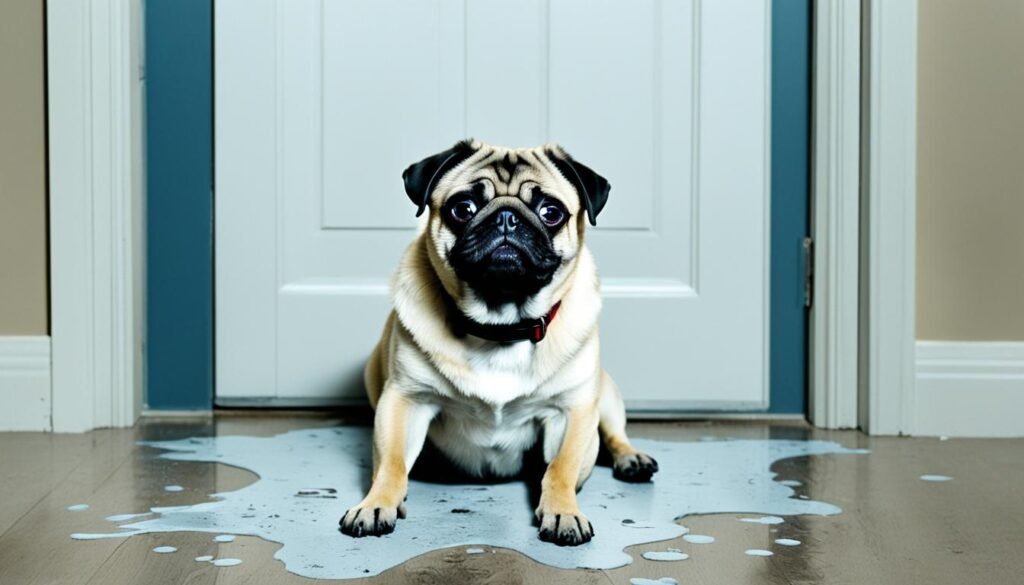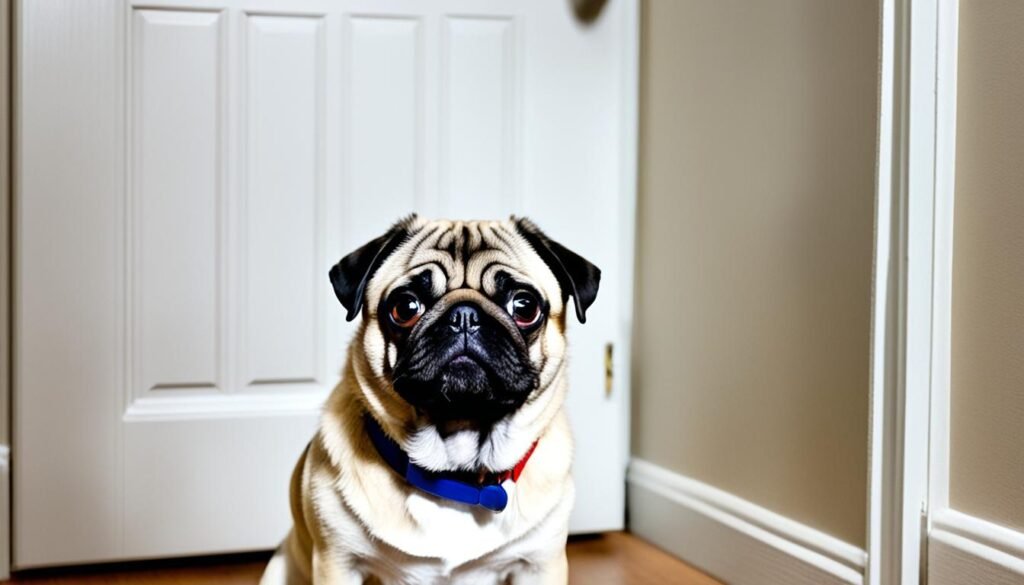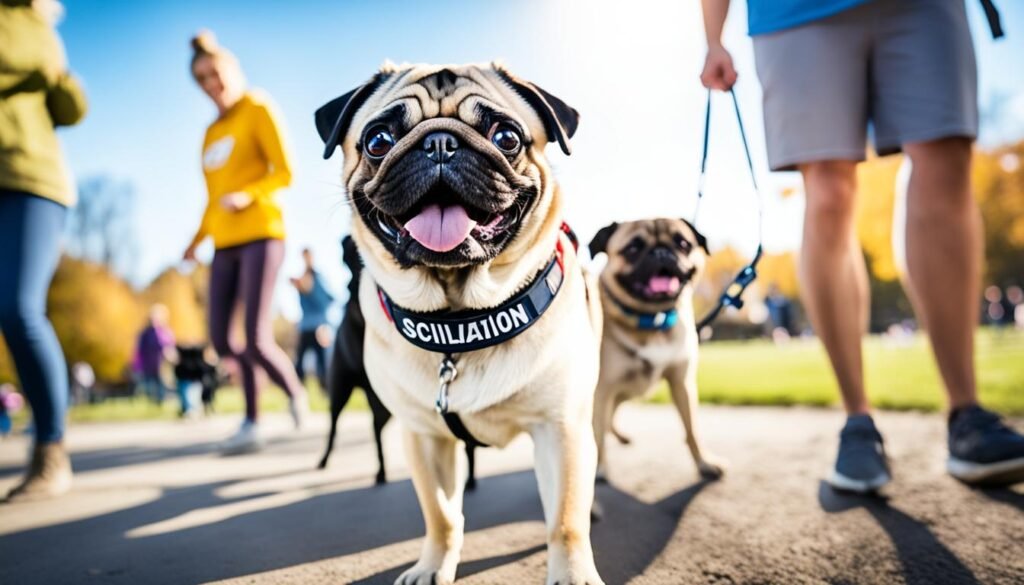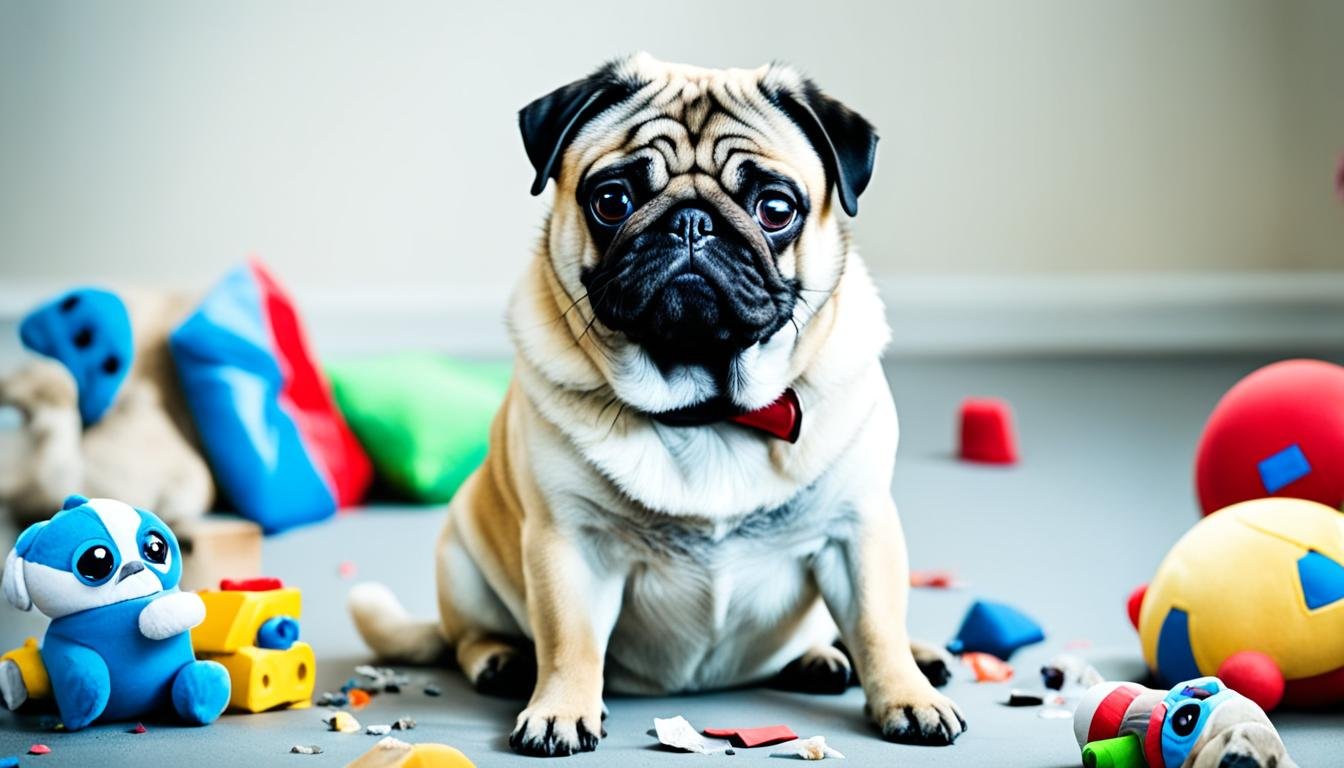How to avoid separation anxiety in Pugs
As a Pug owner, I know how strong the bond is with our furry friends. Pugs are loyal and loving, but this can lead to separation anxiety. This issue can cause stress for both the dog and the owner. Luckily, we can make our Pugs feel better when we’re away.
Separation anxiety in Pugs shows in many ways, like whining, barking, or howling. It can also mean chewing, scratching, or even soiling the house. These actions are hard on both the Pug and the owner. But, by knowing the causes and using the right strategies, we can stop and manage this problem.
We can make our Pugs feel safe and confident by gradually exposing them to being alone. With consistent training and fun activities, we build their trust and independence. This way, they can be happy, well-adjusted members of our families.
This article will cover everything about separation anxiety in Pugs. We’ll look at the causes and how to fix it. With the right tools and attitude, we can beat this challenge and make our bond with our Pugs even stronger.
Understanding Separation Anxiety in Pugs
Pugs are very social and can get very attached to their owners. This can lead to separation anxiety when they are left alone. They may show this by making a lot of noise, chewing things they shouldn’t, or even trying to hurt themselves. It’s important to know why they feel this way to help them.
What is Separation Anxiety?
Separation anxiety means a Pug feels anxious and stressed when they are away from their main person or friend. Pugs are very loving and loyal, which can make them anxious when they are separated from their family.
Causes of Separation Anxiety in Pugs
There are many reasons why Pugs might get separation anxiety. Being left behind before, moving, or big changes in their life can cause it. Traumatic events, like being left alone for too long or a scary experience, can also make them anxious. Knowing what causes their anxiety helps us find ways to help them.

How to avoid separation anxiety in Pugs
Owning a Pug can be fun, but they might feel anxious when left alone. Luckily, there are ways to help them feel secure when you’re not there. Using Pug training techniques for independence, environmental enrichment for Pugs, and exposure and desensitization can make a big difference.
Meeting your Pug’s needs is key to avoiding separation anxiety. This means playing with them, training, going for walks, and giving them toys that challenge their minds. Keeping them busy helps them not need you to be there all the time.
It’s also good to teach your Pug to be alone gradually. Start by leaving them for a little while, then increase the time. Use calming scents and puzzle toys to make your absence positive. A steady routine and calm goodbyes help your Pug feel safe when you’re away.
With these steps, Pugs can learn to be more independent and happy. Being patient and consistent, and making sure their needs are met, helps them thrive even when they’re alone. This way, you and your Pug can have a happy life together, even when apart.
Managing Severe Separation Anxiety
For Pugs with severe separation anxiety, getting professional help is key. This can lead to behaviors like non-stop barking, damage, or even hurting themselves. A vet or animal behaviorist can check for health issues, give a detailed check-up, and make a plan just for your dog.
Behavioral modification techniques are a common first step. They teach the Pug how to handle being alone better. Sometimes, medication for Pug separation anxiety is needed to lessen the anxiety. With the right help and steps, even Pugs with big anxiety issues can get better and be happier.

Being patient and working with experts is crucial. Together, you can find out why your Pug is anxious and fix it. By using different methods, you can make your Pug feel safe and calm when you’re away.
Preventing Separation Anxiety in Pugs
It’s key to prevent separation anxiety in Pugs for their happiness and your peace of mind. By making them independent and confident, socializing them, and creating a comfy home, you can lower the risk of this issue.
Establishing independence and confidence in your Pug is vital. Start by slowly introducing alone time. Teach your Pug to be okay with being alone. This helps them grow strong and stops separation anxiety.

Good socialization and training are key to stopping separation anxiety in Pugs. When your puppy meets different people, animals, and places, they learn to be calm and less anxious when alone.
Also, creating a comfortable, safe space for your Pug is important. A cozy bed or crate can make them feel safe and less anxious. By fulfilling their needs for comfort, mind, and friends, you can stop separation anxiety and keep them happy and well.
Personal Experiences with Separation Anxiety
As a Pug owner, I’ve seen the ups and downs of dealing with separation anxiety. When I first got my Pug, I was thrilled. But soon, I noticed he struggled when left alone. He became anxious, destructive, and even hurt himself when I was away.
With patience, consistency, and various strategies, I helped my Pug beat his anxiety. Slowly, I started leaving him alone for longer periods. Giving him fun toys and things to do in his space also helped a lot. It kept his mind busy and less worried about my leaving.
It was important to stay calm when I left and came back. This showed my Pug there was no need to be scared. I share my story to help other Pug owners who face the same issue. With the right steps, we can manage Pug separation anxiety. This way, our Pugs can be happy and well-adjusted.

